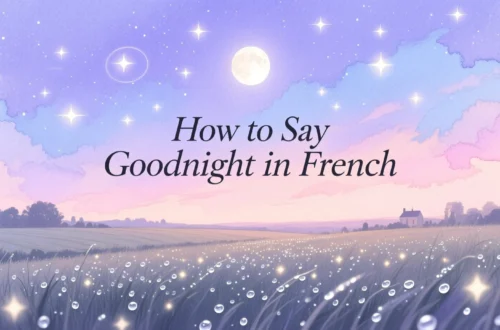Years ago, while wandering through a vibrant market in Marrakech, I overheard a vendor describe a woven rug as “jamila,” his eyes sparkling with pride. That word, meaning “beauty,” captured not just the rug’s intricate patterns but the soul of the moment.
Across the globe, the term for “beauty” varies, yet it universally evokes awe, admiration, and connection. Whether whispered in a serene Kyoto temple or celebrated in a bustling Rio festival, “beauty” reflects humanity’s shared appreciation for the extraordinary, shaped by cultural lenses.
Let’s embark on a journey to explore how people express “beauty” in different languages and what these words reveal about their cultures.
Reference Table: “Beauty” in Different Languages
| Language | Word/Phrase | Cultural/Linguistic Insight |
|---|---|---|
| French | Beauté | Evokes elegance, often tied to art and romance. |
| Spanish | Belleza | Reflects passion and vibrancy, used for people and nature. |
| Italian | Bellezza | Suggests aesthetic perfection, rooted in Italy’s art heritage. |
| German | Schönheit | Emphasizes harmony and order, used broadly for beauty. |
| Mandarin | Měi (美) | Means “beautiful,” tied to balance and harmony. |
| Hindi | Sundarta | From “sundar” (beautiful), evokes emotional and physical charm. |
| Japanese | Utsukushii (美しい) | Describes refined beauty, often linked to nature. |
| Korean | Areumdaum (아름다움) | Conveys aesthetic and inner beauty, rooted in harmony. |
| Arabic | Jamila (جميلة) | Means “beautiful,” used for people and objects across 20+ countries. |
| Swahili | Uzuri | Reflects beauty in nature and character, widely used in East Africa. |
| Zulu | Ubuhle | Emphasizes inner and outer beauty, tied to community values. |
| Yoruba | Ẹwa | Highlights aesthetic and moral beauty, common in Nigeria. |
| Maori | Ātaahua | Means “beautiful,” tied to nature and spirituality in New Zealand. |
| Hawaiian | Nani | Conveys beauty and splendor, reflecting aloha’s warmth. |
| Cherokee | Unequa | Signifies beauty as a cherished quality, used in Native American communities. |
European Languages: Elegance Through Words
European languages express “beauty” with terms that reflect cultural ideals. For instance, in French, “beauté” is tied to romance and art, often used to describe a painting or a loved one in Paris’s cafés. Meanwhile, Spanish uses “belleza,” a vibrant term for people, landscapes, or even a flamenco performance in Spain. Additionally, Italian’s “bellezza” evokes the perfection of Renaissance art, heard in Florence when admiring sculptures. In German, “Schönheit” emphasizes harmony, used for everything from nature to ideas, reflecting Germany’s love for order. Thus, these words blend aesthetic appreciation with cultural values, from poetic French to structured German.
Asian Languages: Harmony in Aesthetics
Asia’s linguistic diversity shapes unique expressions of “beauty,” often tied to balance and emotion. For example, in Mandarin, “měi” (beautiful) reflects harmony, used for serene landscapes or graceful gestures in China. In Hindi, “sundarta” (from “sundar”) evokes charm, heard in India’s markets to describe vibrant saris or kind hearts. Similarly, Japanese uses “utsukushii,” a term for refined beauty, often linked to cherry blossoms or minimalist art. In Korean, “areumdaum” conveys aesthetic and inner beauty, aligning with South Korea’s focus on emotional depth. Finally, Arabic’s “jamila,” used across over 20 countries like Egypt and Lebanon, celebrates beauty in people and creations, rooted in poetic traditions. These terms highlight Asia’s range, from subtle Japanese aesthetics to expressive Hindi and Arabic.
African Languages: Beauty in Community and Nature
In African languages, “beauty” often reflects community and nature. For instance, Swahili, spoken in over 20 countries like Kenya and Tanzania, uses “uzuri” to describe beauty in landscapes or character, often celebrated in communal gatherings. In Zulu, “ubuhle” emphasizes inner and outer beauty, used in South Africa to praise a person’s spirit or appearance. Similarly, Yoruba’s “ẹwa” in Nigeria highlights aesthetic and moral beauty, often tied to cultural pride. These terms, spoken in vibrant markets or family events, underscore Africa’s focus on shared values and natural splendor.
Indigenous & Island Languages: Spiritual and Natural Beauty
Indigenous and island languages express “beauty” with ties to spirituality and nature. For example, Maori in New Zealand uses “ātaahua,” linking beauty to landscapes and spiritual essence. In Hawaiian, “nani” conveys splendor, used for everything from ocean waves to kind acts, reflecting aloha’s warmth. Similarly, Cherokee’s “unequa” signifies beauty as a cherished quality, used in Native American communities for people or traditions. In Samoan, “matagofie” reflects beauty in communal settings, often tied to cultural dances. Across these cultures, from New Zealand to the Pacific, “beauty” emphasizes harmony with nature and community.
Cultural Insights: The Evolution of Beauty’s Words
Words for “beauty” have evolved with cultural ideals. For instance, Latin’s “pulchritudo” (1st century BCE) influenced European terms like “beauté” and “bellezza,” tying beauty to art. In Arabic, “jamila” traces to medieval poetry, shaping its use across the Middle East. Moreover, in African languages like Swahili, “uzuri” reflects trade-era appreciation for natural and human beauty. In Asia, terms like “měi” align with philosophical ideals of balance, evolving with modern aesthetics. These words carry histories of art, spirituality, and cultural exchange, uniting humanity’s admiration for beauty across time.
Proverbs and Sayings: Wisdom of Beauty
- **10 French: “La beauté est dans les yeux de celui qui regarde.” (Beauty is in the eyes of the beholder.) – Ties beauty to perception and connection.
- Hindi: “Sundarta dil se dil tak jati hai.” (Beauty travels from heart to heart.) – Emphasizes inner beauty’s power.
- Swahili: “Uzuri wa moyo ni wa thamani kuliko uso.” (The beauty of the heart is worth more than the face.) – Values character over appearance.
- Japanese: “Utsukushii mono wa kokoro o hikaru.” (Beautiful things light up the heart.) – Links beauty to emotional impact.
- Yoruba: “Ẹwa inu, ẹwa ita.” (Beauty inside, beauty outside.) – Celebrates holistic beauty.
FAQs
Why do some words for “beauty” sound similar?
Shared linguistic roots (e.g., Indo-European for French, Spanish) and cultural exchanges (e.g., Arabic’s influence on Swahili) create similarities.
What’s the oldest term for “beauty”?
Latin’s “pulchritudo” (circa 1st century BCE) is among the earliest, influencing modern European terms.
How do cultures shape the term’s use?
Collectivist cultures (e.g., African, Indigenous) tie beauty to community and nature, while individualistic cultures (e.g., European) focus on aesthetics.
Conclusion
From “belleza” in Spain to “uzuri” in Tanzania, the word for “beauty” weaves a global tapestry of admiration and awe. Each term, whether the poetic “utsukushii” in Japanese or the warm “nani” in Hawaiian, reflects cultural values while celebrating humanity’s shared love for elegance. Consequently, these words remind us that beauty, in all its forms, unites people across borders. How do you say “beauty” in your language, and what makes it special? Share your thoughts below—we’re eager to hear your story!





